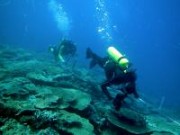Kerryn Crossman
Formally Kerryn Johns
Author of
Corals are the back bones of coral reef ecosystems. They produce calcium carbonate skeletons that build coral reef framework. Reef fishes and many other inhabitants depend upon corals for shelter and food. Coral populations are dynamic, cycling through phases of disturbance and recovery. Many types of disturbance kill corals including cyclones, Crown-of-Thorns Starfish (COTS) outbreaks, bleaching and disease.

The AIMS Long-Term Monitoring Program (LTMP), initiated in 1993, was designed to track changes in populations of key groups of organisms, particularly crown-of-thorns starfish, corals and reef fishes, on appropriate spatial scales over the length and breadth of the Great Barrier Reef World Heritage Area (GBRWHA).
The specific objectives of the LTMP are:
- To monitor the status and changes in distribution and abundance of reef biota on a large scale.
- To provide environmental managers with a context for assessing impacts of human activities within the GBR Marine Park and with a basis for managing the GBR for ecologically sustainable use.
- To examine the effects of rezoning the GBR Marine Park on biodiversity.
This report (Status Report no. 8) presents a synthesis of LTMP and RAP data collected up to the 2007 field season. Results from 2006 and 2007 have not previously been reported.



